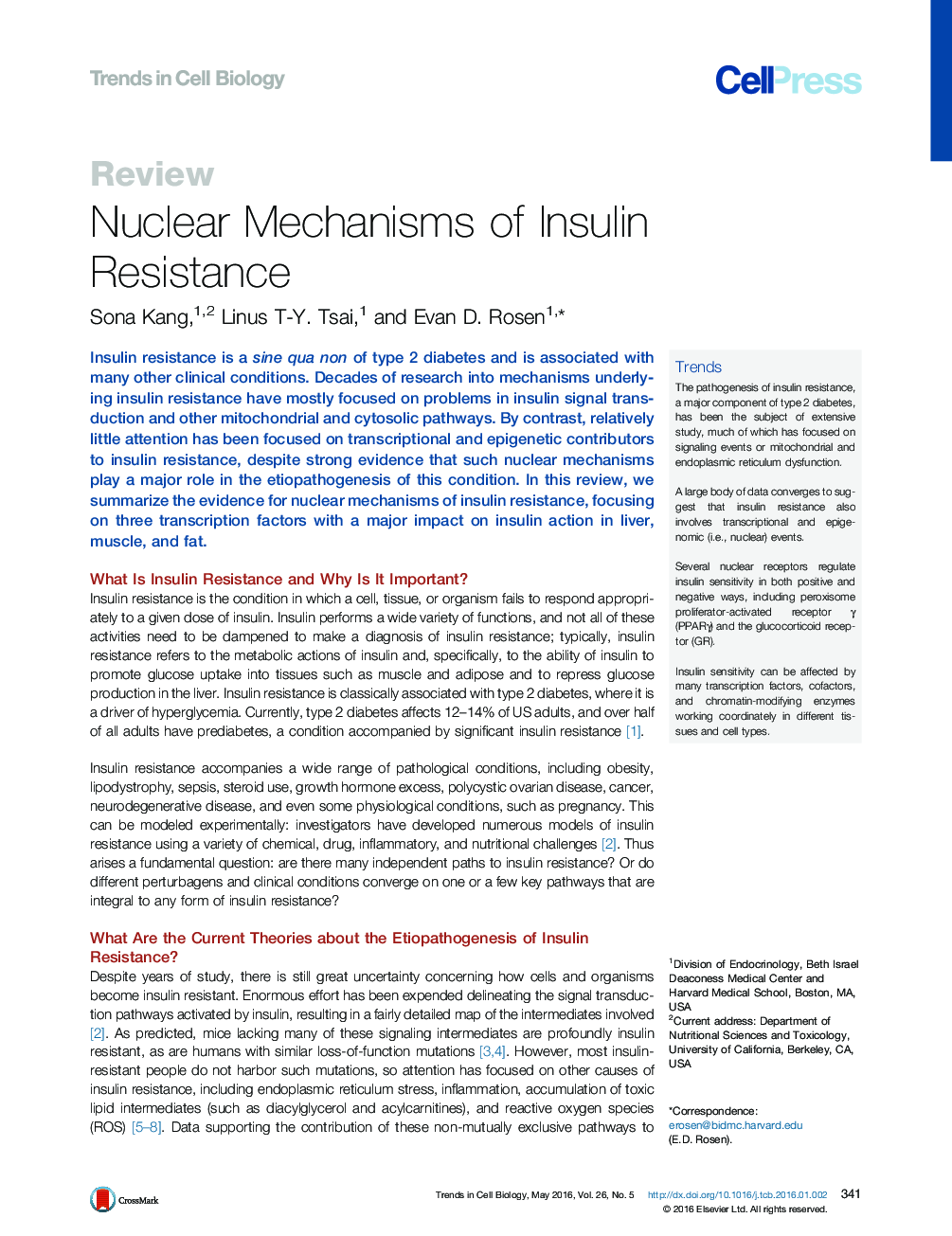| Article ID | Journal | Published Year | Pages | File Type |
|---|---|---|---|---|
| 2204243 | Trends in Cell Biology | 2016 | 11 Pages |
Insulin resistance is a sine qua non of type 2 diabetes and is associated with many other clinical conditions. Decades of research into mechanisms underlying insulin resistance have mostly focused on problems in insulin signal transduction and other mitochondrial and cytosolic pathways. By contrast, relatively little attention has been focused on transcriptional and epigenetic contributors to insulin resistance, despite strong evidence that such nuclear mechanisms play a major role in the etiopathogenesis of this condition. In this review, we summarize the evidence for nuclear mechanisms of insulin resistance, focusing on three transcription factors with a major impact on insulin action in liver, muscle, and fat.
TrendsThe pathogenesis of insulin resistance, a major component of type 2 diabetes, has been the subject of extensive study, much of which has focused on signaling events or mitochondrial and endoplasmic reticulum dysfunction.A large body of data converges to suggest that insulin resistance also involves transcriptional and epigenomic (i.e., nuclear) events.Several nuclear receptors regulate insulin sensitivity in both positive and negative ways, including peroxisome proliferator-activated receptor γ (PPARγ) and the glucocorticoid receptor (GR).Insulin sensitivity can be affected by many transcription factors, cofactors, and chromatin-modifying enzymes working coordinately in different tissues and cell types.
